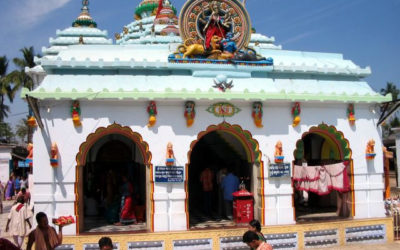One of the most mysterious properties of Khajuraho — Pratapeshwar Temple — will soon be opened for tourism. The Archaeological Survey of India (ASI), which has been maintaining other temples in Western Complex, will take over the temple for protection.
“The temple is closed since 1956 as per the States Reorganisation Act, where all heritage properties were considered to be princely by either the state or the central government. Due to some reasons, the state archeology department was unable to take care of the property and therefore it was sealed,” said a senior archaeology officer.
The temple manages to attract a lot of attention by tourists. “The temple is in the same complex which has Vishwanath Temple, Devi Mandap, Lakshman Temple, Kandariya Mahadev and Devi Jagdambi Temple. Though the Pratapeshwar Temple is closed, we introduce it to the tourists and narrate its importance in Khajuraho. They can view it from outside,” said Prayas Badkul, an owner of a tourist guide organisation in Khajuraho.
“The Pratapeshwar Temple was built by Raja Pratap Singh as a memorial of himself, to immortalise his name. Kings back then, used to build monuments on their names to glorify themselves and to be at par with the God. The temple is an interesting conglomeration of three Hinduistic cultural architecture techniques. It has a Rajputana dome in the front, a pagoda style of ceiling in the middle and then a typical brahminical Shikhara (summit) at the back. It is the only temple that represents the 18th century contemporary carving and structure,” said Sudesh Tamrakar, a senior tourist guide in Khajuraho.
On being asked what is inside the temple, Tamrakar said: “It is said that it has a ‘shivling’ made of black stone. Usually, kings after creating such monuments on their names, used to establish some sort of mythological statue for the sake of its protection.”
“Pratapeshwar temple, like other temples in Khajuraho, also belongs to the ‘non-living’ temple category as there are no traces of worshipping inside the temple by locales. It is still indefinite to say how much of the temple will be opened because once ASI starts working on a site, several historical facets of that particular property are unfolded. Since the temple was closed for so many years, it becomes difficult to comment,” said Zulfiqar Ali, superintending archaeologist, Bhopal.



0 Comments